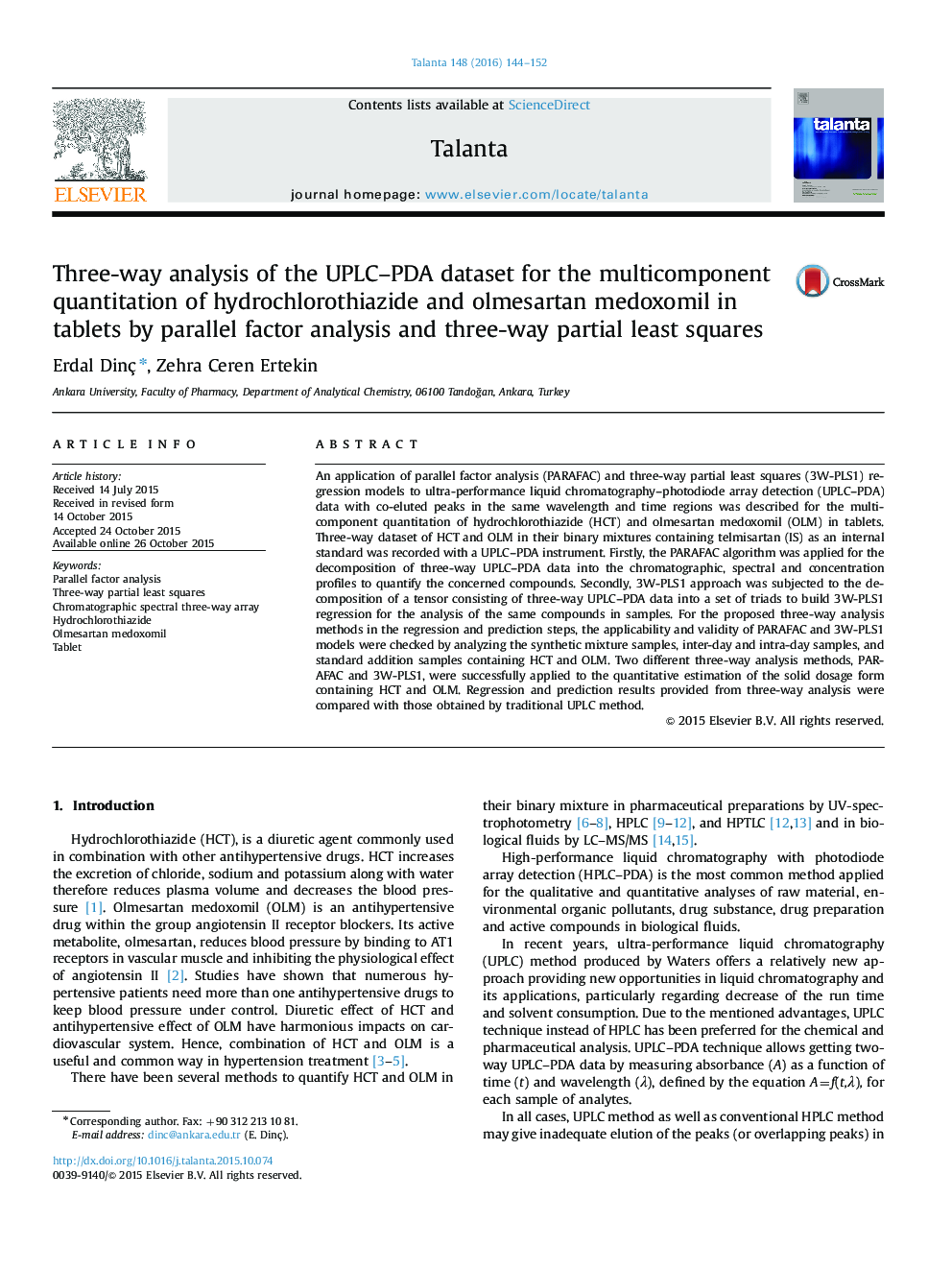| Article ID | Journal | Published Year | Pages | File Type |
|---|---|---|---|---|
| 1243770 | Talanta | 2016 | 9 Pages |
•We described a new application of PARAFAC and 3W-PLS1 to the UPLC data arrays.•Three-way analysis methods were used to quantify two drugs with internal standard.•Three-way analysis results were comparable with those obtained by traditional UPLC.
An application of parallel factor analysis (PARAFAC) and three-way partial least squares (3W-PLS1) regression models to ultra-performance liquid chromatography–photodiode array detection (UPLC–PDA) data with co-eluted peaks in the same wavelength and time regions was described for the multicomponent quantitation of hydrochlorothiazide (HCT) and olmesartan medoxomil (OLM) in tablets. Three-way dataset of HCT and OLM in their binary mixtures containing telmisartan (IS) as an internal standard was recorded with a UPLC–PDA instrument. Firstly, the PARAFAC algorithm was applied for the decomposition of three-way UPLC–PDA data into the chromatographic, spectral and concentration profiles to quantify the concerned compounds. Secondly, 3W-PLS1 approach was subjected to the decomposition of a tensor consisting of three-way UPLC–PDA data into a set of triads to build 3W-PLS1 regression for the analysis of the same compounds in samples. For the proposed three-way analysis methods in the regression and prediction steps, the applicability and validity of PARAFAC and 3W-PLS1 models were checked by analyzing the synthetic mixture samples, inter-day and intra-day samples, and standard addition samples containing HCT and OLM. Two different three-way analysis methods, PARAFAC and 3W-PLS1, were successfully applied to the quantitative estimation of the solid dosage form containing HCT and OLM. Regression and prediction results provided from three-way analysis were compared with those obtained by traditional UPLC method.
Graphical abstractThree-dimensional UPLC plot of hydrochlorothiazide and olmesartan medoxomil with telmisartan as internal standard and its corresponding chromatographic and spectral profiles obtained by the application of the PARAFAC model.Figure optionsDownload full-size imageDownload as PowerPoint slide
